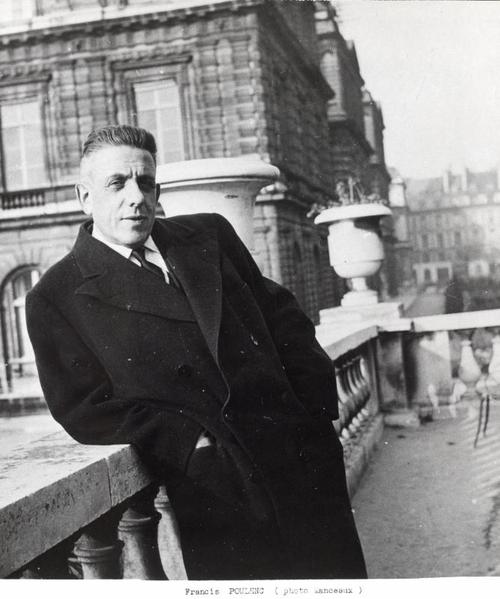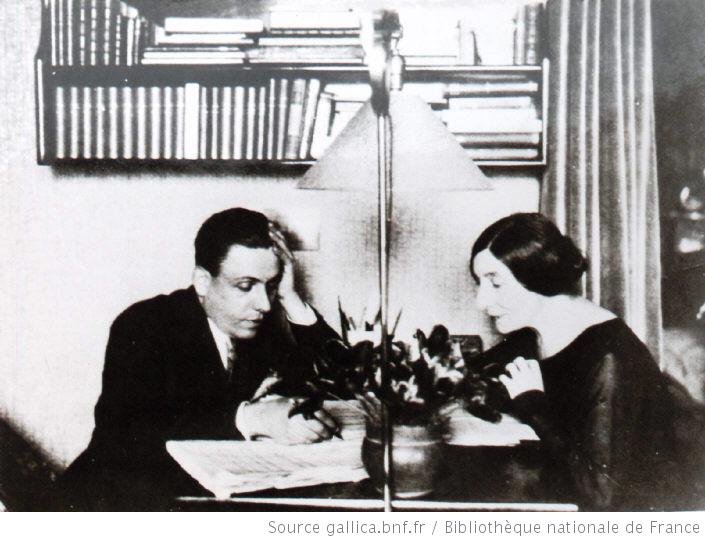<Back to Index>
- Composer Francis Jean Marcel Poulenc, 1899
PAGE SPONSOR
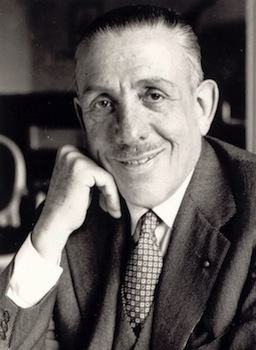
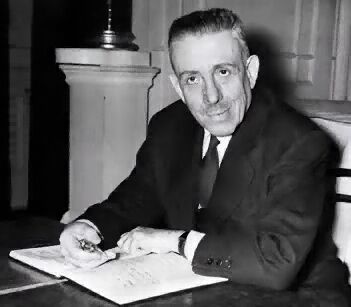
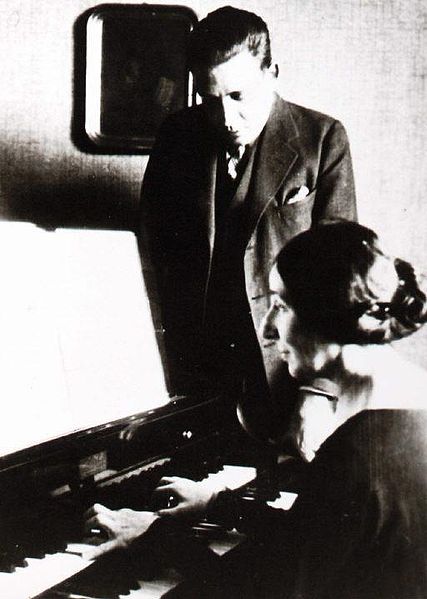
Francis Jean Marcel Poulenc (7 January 1899 – 30 January 1963) was a French composer and a member of the French group Les Six. He composed solo piano music, chamber music, oratorio, choral music, opera, ballet music and orchestral music. Critic Claude Rostand, in a July 1950 Paris - Presse article, coined the term "half monk, half thug" (translated by Ivry from "le moine et le voyou"), a phrase that would often be used to describe Poulenc.
Poulenc was born in Paris in 1899. His father Emile Poulenc was a second generation director of the Poulenc, and later Rhône - Poulenc, chemical corporation. His mother, an amateur pianist, taught him to play. He was introduced to Ricardo Viñes in 1914, a champion of the music of Claude Debussy and Maurice Ravel, and became his pupil shortly afterwards. He was a capable pianist, and the keyboard dominated his early compositions.
In 1916 a childhood friend, Raymonde Linossier (1897 - 1930), introduced Poulenc to Adrienne Monnier's bookshop, the Maison des Amis des Livres. There he met avant garde poets such as Guillaume Apollinaire, Max Jacob, Paul Eluard and Louis Aragon. He was to set many of their poems to music.
His first known piece, Rapsodie Nègre (1917), caught Stravinsky's attention. Stravinsky was later instrumental in having the work published in London.
Le Bestiaire, ou Le Cortège d'Orphée (also in 1917) is a cycle of melodies on poems by Guillaume Apollinaire. In 1918 he gave the premiere of his Sonata for piano four hands with a fellow Viñes pupil, Marcelle Meyer.
Poulenc premiered several of his new pieces - the Sonata for Two Clarinets, the Sonata for Piano Four Hands, a Sonata for Violin and Piano, and Trois movements perpétuels - at a series of concerts held from 1917 to 1920 in painter Émile Lejeune's studio in Montparnasse. There Poulenc met other young composers, and together they formed first Erik Satie’s Nouveaux jeunes and then Jean Cocteau’s Les Six, a loose knit group of young French and (one) Swiss composers. Poulenc composed his Valse en ut for L'album des six (1920) and also contributed to Les mariés de la tour Eiffel (1921) with Discours du Général and La Baigneuse de Trouville.
During the 1920s, Poulenc's most immediate influences were Chabrier, Debussy, Satie and Stravinsky, and he generally followed the irreverent, flippant aesthetic stance of Les Six with melodies in which the influence of Parisian music halls is deeply felt.
Between 1921 and 1925 Poulenc received his first formal musical training when he studied composition with Charles Koechlin (1921 - 25). But he mostly remained a self taught composer.
Diaghilev commissioned ballet music for Les biches, given by the Ballets Russes in January 1924, with settings by Marie Laurencin.
In 1926 he met baritone Pierre Bernac, who became a very close friend (but not a sexual partner). A great many of the chansons and melodies Poulenc wrote were composed for Bernac. They gave recitals throughout the world together from 1935 until 1959.
In 1927, Poulenc bought "Le grand coteau", a house close to Noizay, in the Touraine where he enjoyed the quiet atmosphere he needed to work.
In 1928 he composed the Concert champêtre, a piece for harpsichord and orchestra commissioned by Wanda Landowska. It was dedicated to Poulenc's lover, painter Richard Chanlaire.
In the same year Poulenc recorded his Trois mouvements perpétuels and the Trio for piano, oboe and bassoon, and then Le Bestiaire. He also started publishing musical reviews in Les Arts phoniques.
He created his Concerto for two pianos and orchestra with Jacques Février in 1932. Also in 1932 Le Bal Masqué, a lighter piece, was created privately at the Noailles.
Poulenc's religious reawakening in 1936 resulted in the creation of his first sacred pieces, Litanies à la Vierge Noire de Rocamadour (1936) and the Mass in G (1937); this trend toward "new dimensions and greater depth" in the composer's style was solidified by the song cycle Tel jour, telle nuit (1937) and Concerto in G minor for organ, strings, and timpani (1938). The remainder of Poulenc's career consisted of a "gradual deepening and distillation" of his basic style, and featured an increased concentration on sacred music and music for the stage, including Les mamelles de Tirésias (1947), Stabat Mater (1950), Dialogues of the Carmelites (1957), Gloria (1959) and Sept répons des ténèbres (1962). Among Poulenc's last major works is a series of sonatas for wind instruments and piano. He was particularly fond of woodwinds, and planned a set of sonatas for all of them, yet only lived to complete four: sonatas for flute, oboe, clarinet and the Elégie for horn.
Poulenc had only one piano student, Gabriel Tacchino, who has performed and recorded all his piano music.
Poulenc was a featured pianist in recordings, including some of his own songs (with Pierre Bernac, recorded in 1947; and Rose Dercourt) and the Concerto for Two Pianos (recorded in May 1957). He supervised the 1961 world premiere recording of his Gloria, which was conducted by Georges Prêtre. His recordings were released by RCA Victor and EMI. Poulenc's Perpetual Motion No. 1 (1918) is used in Alfred Hitchcock's Rope (1948).
Poulenc's music is fundamentally tonal; although he made use of harmonic innovations such as pandiatonicism, chromatically altered chords, and even 12 - tone rows (in a few of his last works), Poulenc never questioned the validity of traditional tonic - dominant harmony. Lyrical melody pervades his music and underlies his important contributions to vocal music, particularly French art song.
Some writers consider Poulenc one of the first openly gay composers. His
first serious relationship was with painter Richard Chanlaire, to whom
he wrote on his Concert champêtre score: "You have changed my life, you are the sunshine of my thirty years, a reason for living and working".
He also once said, "You know that I am as sincere in my faith, without
any messianic screamings, as I am in my Parisian sexuality."
However, Poulenc's life was also one of inner struggle. Having been
born and raised a Roman Catholic, he struggled throughout his life
between coming to terms with his "unorthodox" sexual "appetites" and maintaining his religious convictions.
In 1923, Poulenc was "unable to do anything" for two days after the death from typhoid fever of twenty year old novelist Raymond Radiguet, Jean Cocteau's lover. However, two weeks later he made lewd jokes about a male ballet dancer to Sergei Diaghilev at the rehearsals of Les Biches. Then in 1930 came the death of Raymonde Linossier, a woman to whom he had proposed a marriage of convenience in 1928 and had remained a "cherished friend" until her death. In 1936, Poulenc was profoundly affected by the death of another composer, Pierre - Octave Ferroud. This led him to his first visit to the shrine of the Black Virgin of Rocamadour. Here, before the statue of the Madonna with a young child on her lap, Poulenc experienced a life changing transformation. Thereafter, he produced a sizeable output of liturgical music or compositions based on religious themes.
In 1949, Poulenc experienced the death of a friend, the artist Christian Bérard, for whom he composed his Stabat Mater (1950).
Poulenc died of heart failure in Paris on 30 January 1963 and is buried at the Père Lachaise Cemetery.
